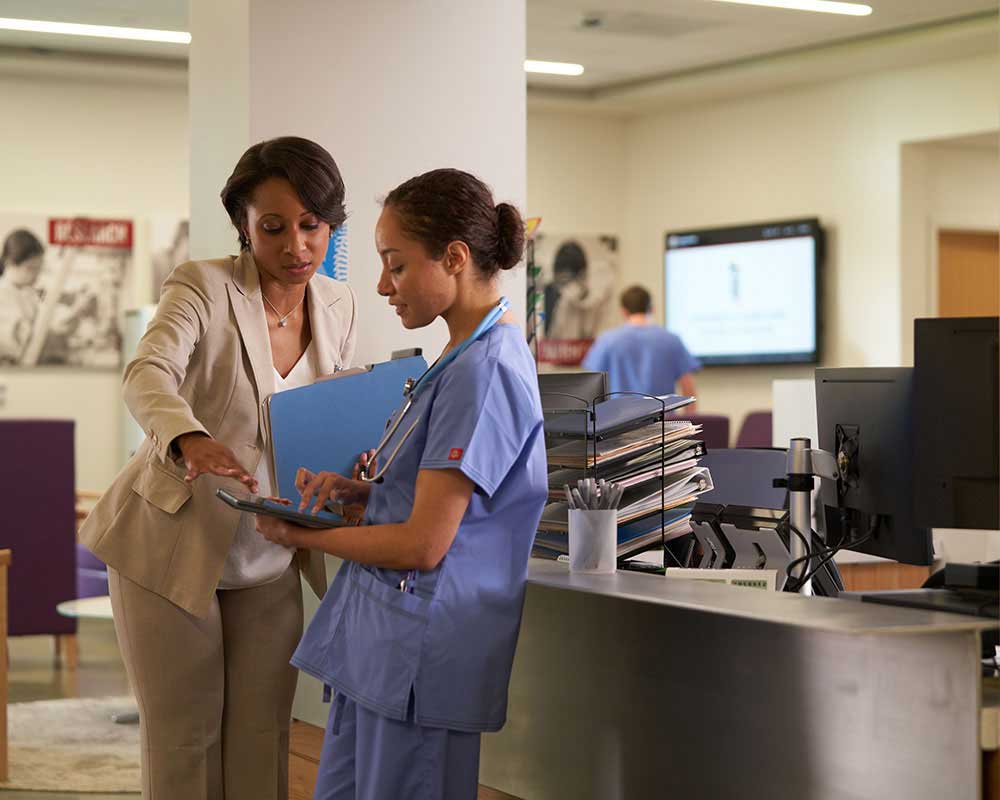A Complete Overview to Medical Administration Certifications and Credentials
A Complete Overview to Medical Administration Certifications and Credentials
Blog Article
Finest Practices in Medical Administration for Improving Efficiency and Minimizing Expenses
In the ever-evolving landscape of health care, the pursuit of finest techniques in medical management is extremely important for improving effectiveness and suppressing costs. By incorporating advanced innovations such as electronic health documents and telemedicine, health care providers can improve procedures and enhance person care.
Leveraging Advanced Modern Technology
In today's swiftly developing health care landscape, leveraging sophisticated innovation is no longer optional but necessary for efficient clinical administration. The assimilation of digital remedies into healthcare systems has actually transformed the method centers operate, enhancing processes and boosting client care. Electronic Health And Wellness Records (EHRs) are essential, giving extensive patient information that can be accessed instantly by accredited workers, hence lowering redundancy and minimizing errors. By systematizing person details, EHRs get rid of the demand for troublesome paperwork and facilitate seamless interaction amongst healthcare suppliers.
Telemedicine is an additional technological improvement that has revolutionized person communication. It supplies ease for both people and health care specialists by enabling remote assessments, which can minimize the need for in-person check outs and maximize consultation organizing. In addition, telehealth systems can prolong health care accessibility to country or underserved locations, linking gaps in treatment distribution.
Furthermore, the use of Expert system (AI) and machine understanding is ending up being progressively widespread in anticipating analytics, enabling early detection of possible wellness problems and more enlightened decision-making. These innovations, when integrated efficiently, can enhance diagnostic precision and customize patient treatment plans, inevitably resulting in improved medical care end results and operational efficiency.
Optimizing Source Appropriation
Reliable resource allowance is essential for maximizing the effectiveness of clinical management. By tactically taking care of resources such as personnel, tools, and financial resources, healthcare facilities can considerably improve their functional efficiency, boost client end results, and reduce unnecessary expenditures. The initial step in enhancing resource allocation includes performing an extensive evaluation of present possessions and recognizing areas where resources may be underutilized or overextended. This evaluation must be data-driven, making use of metrics and analytics to notify decision-making procedures.
Prioritizing resource appropriation based on client demands and solution demands is essential. This includes lining up sources with high-demand locations, such as emergency care or specialized treatments, to make certain timely and reliable client treatment. Carrying out versatile staffing models can additionally maximize labor resources by adjusting personnel allotment in action to varying person volumes. Furthermore, welcoming telemedicine and other technical solutions can alleviate physical source restraints by offering alternate methods for patient-provider interactions.
Monetary resources must be meticulously monitored and assigned with calculated foresight to support both short-term operational demands and long-lasting institutional goals. This includes investing in training programs that boost personnel proficiencies and embracing energy-efficient practices that lower operational expenses (medical administration). Inevitably, an optimized resource allotment technique fosters a lasting healthcare environment that is responsive, effective, and monetarily prudent
Streamlining Process Processes
When health care centers aim to boost functional performance, streamlining process processes comes to be a critical focus. Reliable operations reduce redundancy, remove unnecessary steps, and boost control amongst healthcare professionals. This technique not only accelerates solution delivery yet also improves the quality of client treatment.

Following, technology assimilation plays a significant duty in streamlining wikipedia reference workflows. Carrying out electronic health and wellness documents (EHRs) and computerized doctor order entry (CPOE) systems lowers paperwork, lessens human error, and ensures info is easily accessible to all pertinent workers. In addition, leveraging telemedicine systems can streamline person assessments and follow-ups, lowering the stress on physical infrastructure.

Inevitably, streamlined workflows bring about set you back decreases and enhanced individual complete satisfaction, cultivating an extra sustainable healthcare setting.
Enhancing Data Management
Building upon streamlined operations, maximizing information management ends up being a crucial component beforehand medical care administration. Efficient data management systems are important for maintaining precise individual documents, boosting decision-making, and making certain conformity with regulatory requirements. By implementing durable data administration services, medical care centers can improve the top quality of patient care while concurrently reducing functional expenses.
One trick element of boosting information monitoring is the combination of advanced electronic health document (EHR) systems. These systems promote the seamless exchange of client info across different departments, reducing replication of tests and reducing mistakes. A properly designed EHR system sustains information analytics, allowing health find care providers to identify patterns and make informed decisions relating to individual care.
In addition, protecting patient data is vital. Adopting detailed cybersecurity procedures, consisting of security and routine audits, guarantees the stability and discretion of delicate info. This not just secures patients but also preserves the institution's track record.
Spending in personnel training is another crucial aspect. Informing health care professionals on information monitoring methods enhances their capacity to successfully use modern technology, causing boosted patient results. In final thought, boosting information monitoring via advanced modern technology and thorough training is important for Going Here achieving effectiveness and price reduction in clinical administration.
Fostering Collaborative Interaction
An essential part in advancing clinical administration is cultivating collective interaction among medical care specialists. Efficient interaction is paramount for making sure smooth client treatment, maximizing treatment outcomes, and reducing errors. By motivating open discussion and control throughout multidisciplinary groups, medical care companies can boost their functional effectiveness and decrease unnecessary expenses.
Central to this strategy is the integration of communication technologies such as electronic health and wellness records (EHRs) and safe and secure messaging systems, which facilitate the fast exchange of important person info. These tools enable medical care service providers to access and share information in genuine time, guaranteeing that all team participants are notified and lined up in their decision-making processes. Moreover, routine group conferences and interdisciplinary rounds can even more advertise a society of collaboration and liability.
Educating programs concentrated on enhancing communication abilities are additionally important. These programs can aid staff create the capability to communicate details plainly and listen actively, hence minimizing misunderstandings and cultivating an encouraging workplace. Furthermore, adopting standardized communication procedures, such as SBAR (Circumstance, Background, Evaluation, Suggestion), can improve the exchange of details, guaranteeing that vital information are communicated succinctly and efficiently. Inevitably, cultivating joint communication causes enhanced medical care shipment and cost savings (medical administration).

Final Thought
Including sophisticated modern technology, such as digital health documents and telemedicine, alongside optimized source appropriation and structured operations procedures, is vital for enhancing efficiency in medical administration. Effective information management and cultivating joint communication among healthcare teams are essential for lessening redundancies and boosting treatment high quality. By focusing on preventative care and taking part in high quality enhancement efforts, medical care organizations can achieve substantial expense savings and enhanced client end results, consequently guaranteeing lasting health care distribution in a significantly complex environment.
Report this page